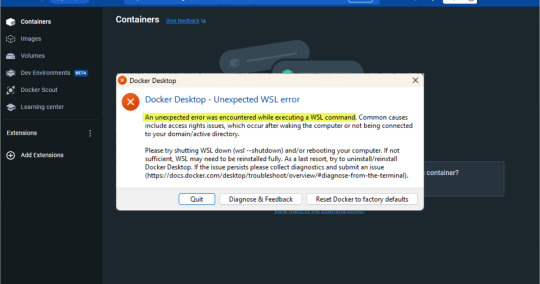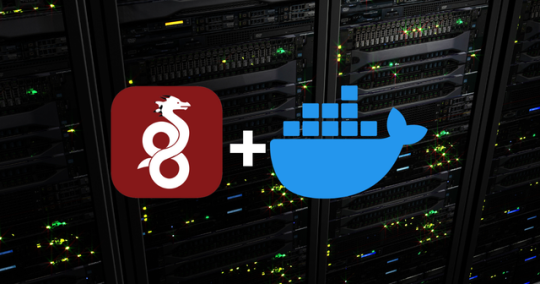#docker solutions
Explore tagged Tumblr posts
Text
How to Install Unraid NAS: Complete Step-by-Step Guide for Beginners (2025)
If you’re looking to set up a powerful, flexible network-attached storage (NAS) system for your home media server or small business, Unraid is a brilliant choice. This comprehensive guide will walk you through the entire process to install Unraid NAS from start to finish, with all the tips and tricks for a successful setup in 2025. Unraid has become one of the most popular NAS operating systems…
#2025 nas guide#diy nas#home media server#home server setup#how to install unraid#network attached storage#private internet access unraid#small business nas#unraid backup solution#unraid beginner tutorial#unraid community applications#unraid data protection#unraid docker setup#unraid drive configuration#unraid hardware requirements#unraid licencing#unraid media server#unraid nas setup#unraid parity configuration#unraid plex server#unraid remote access#unraid server guide#unraid troubleshooting#unraid vpn configuration#unraid vs synology
2 notes
·
View notes
Note
Hello! I'm a Switch player and for some reason I can't seem to be able to update the game
Heya! If you are still having these issues:
Check if your switch space is full
What version is your game currently at?
Check if there's an option to update through + on the app to see further info
Reinstall Sky:cotl
Check further to see if you have any sort of issues with wifi- and if you have access to your router restart it if so(most you unplug for about a minute then reinsert- wait about 15 mins and wifi should have restarted. I do not recommend the button to turn it off in these cases due to that not always working)
If there's still issues, I recommend checking what your switch model is, check further to see if there's any issues from Nintendo's side, and if that doesn't work, there likely is a solution further out there that people have found to work in the past, I've listed the common ones above so I do hope any issues are fixed that way.
-Ymir
#(why am I saying to restart your wifi router that way? well. your honor. it always works for restarting no matter the model -Ymir)#(but wish you luck skykid! been like 2 days so I assume you got it? but either way I am replying with solutions further if needed -Ymir)#(my switch is in babyjail 24/7[docker] so I am unsure of how long the current sky download time is your honor -ymir)
20 notes
·
View notes
Text
Tip: Focus on What value you get once Cloud Solution is implemented for next business growth OR innovation.
Do you know, Techjour's Cloud Solution reduces business operating cost, gives security to data and flexibility to focus more on your business. It meets immediate on-demand business need, in fast moving digital world.

#devopsengineer#devopstools#devops#cloud solutions#cloud service provider#cloud services#google cloud#cloudcomputing#cloudmigration#cloudconsulting#kubernetes#ansible#jenkins github#startup#automation#technology#trendingnow#successful business#small business#digital business#docker#sme#entrepreneur#digital strategy
0 notes
Text
Docker Setup: Monitoring Synology with Prometheus and Grafana
In this article, we will discuss “Docker Setup: Monitoring Synology with Prometheus and Grafana”. We will be utilizing Portainer which is a lightweight/open-source management solution designed to simplify working with Docker containers instead of working with the Container Manager on Synology. Please see How to use Prometheus for Monitoring, how to Install Grafana on Windows and Windows Server,…
#Accessing Grafana and Prometheus#Add Portainer Registries#Configure and Run Prometheus Container#docker#Docker Containers on Synology#Enter5yourownpasswordhere123456#Enter5yourownpasswordhere2345#Grafana monitoring#Grafana/Prometheus Monitoring#How To Install Prometheus And Grafana On Docker#install portainer#Modify Synology Firewall Rules#monitoring solutions for Docker#portainer#portainer server#Prometheus Grafana integration#Prometheus metrics#Pull Docker Images for Grafana and Prometheus#Set Up Grafana Data Source#Synology monitoring setup#Your Portainer instance timed out for Security Purposes
0 notes
Text
Docker Desktop Unexpected WSL Error Fix
Docker Desktop Unexpected WSL Error Fix #docker #containers #DockerDesktopWSLError #WSLCommandErrorFix #DockerDesktopSettingsAdjustment #WindowsSubsystemForLinuxError #DockerDesktopConfigModification #DockerOnWindowsTroubleshooting #DockerDesktop
Docker Desktop is a great tool for developers, DevOps pros, and home lab enthusiasts and allows you to interact with the tool without having to install Docker and use it from the command line in Linux. However, the unexpected WSL error often appears post-Docker Desktop installation when executing a WSL command. Several different issues, including access rights, can trigger this error. This post…

View On WordPress
#Docker Desktop and Azure VMs#Docker Desktop command line solution#Docker Desktop config modification#Docker Desktop nested virtualization#Docker Desktop settings adjustment#Docker Desktop version-specific fix#Docker Desktop WSL error#Docker on Windows troubleshooting#Windows Subsystem for Linux error#WSL command error fix
0 notes
Text
What is the most awesome Microsoft product? Why?
The “most awesome” Microsoft product depends on your needs, but here are some top contenders and why they stand out:
Top Microsoft Products and Their Awesome Features
1. Microsoft Excel
Why? It’s the ultimate tool for data analysis, automation (with Power Query & VBA), and visualization (Power Pivot, PivotTables).
Game-changer feature: Excel’s Power Query and dynamic arrays revolutionized how users clean and analyze data.
2. Visual Studio Code (VS Code)
Why? A lightweight, free, and extensible code editor loved by developers.
Game-changer feature: Its extensions marketplace (e.g., GitHub Copilot, Docker, Python support) makes it indispensable for devs.
3. Windows Subsystem for Linux (WSL)
Why? Lets you run a full Linux kernel inside Windows—perfect for developers.
Game-changer feature: WSL 2 with GPU acceleration and Docker support bridges the gap between Windows and Linux.
4. Azure (Microsoft Cloud)
Why? A powerhouse for AI, cloud computing, and enterprise solutions.
Game-changer feature: Azure OpenAI Service (GPT-4 integration) and AI-driven analytics make it a leader in cloud tech.
5. Microsoft Power BI
Why? Dominates business intelligence with intuitive dashboards and AI insights.
Game-changer feature: Natural language Q&A lets users ask data questions in plain English.
Honorable Mentions:
GitHub (owned by Microsoft) – The #1 platform for developers.
Microsoft Teams – Revolutionized remote work with deep Office 365 integration.
Xbox Game Pass – Netflix-style gaming with cloud streaming.
Final Verdict?
If you’re a developer, VS Code or WSL is unbeatable. If you’re into data, Excel or Power BI wins. For cutting-edge cloud/AI, Azure is king.
What’s your favorite?
If you need any Microsoft products, such as Windows , Office , Visual Studio, or Server , you can go and get it from our online store keyingo.com
8 notes
·
View notes
Text
JAKE LOCKLEY/MOON KNIGHT COSPLAY RESOURCE:
🌙Ya know, I never thought to do this but I think it would be a wonderful tool for Cosplayers out there! I'm a Jake Lockley Cosplayer, and have done a wealth of research about his wardrobe from the series. I know as much about is as a fan could possibly know. I'll add to this thread fun trivia as I go I think… If you had any inkling of a desire to cosplay Jake here's some of my finds!! READ MORE UNDER THE CUT!
HAT - The most important piece. From my research it appears to be a Göttmann brand "Jackson Linen Driving Cap" Charcoal (https://www.goettmann.de/en/ ) You can cross reference with the metallic pin on the lefthand side of his cap.

The main site will offer vendors in various areas so check it out! Shop I used: https://scotlandhouseltd.com/collections/mens-summer-hats-caps/products/jackson-linen-flatcap-desert-color

GLOVES - The second big one. So these are not driving gloves, I learned, but interestingly enough shooting gloves. Note the armored knuckles, and the character's role in the show as a gunman. Now, I couldn't find the exact match but an awesome alternative is to purchase motorcycle riding gloves. I found a cheap pair on Amazon, because the next step after the gloves are obtained is to paint them. A talented artist on the MK Costuming team was the brilliant hand painter behind Taweret's ornamental pieces, Layla's armor, and these moon crescents. To paint the moons I simply masked the shapes with painter's tape and used silver acrylic from my local art supply store. It will take several coats.



Here's the glove alternative via Amazon "Harssiney Leather Motorcycle Gloves for Men,Touchscreen Riding Driving Biker Glove with Hard Knuckle Protection,Motorcycle Accessories for Man" :

JACKET - The third most important piece because it is also the most difficult to achieve. This was a custom made raw denim jacket by the MK team, with a 3D printed collar featuring a very unique design. Should you have the funds to pattern this and make to screen accuracy I'd love to see what you came up with! I took the budget friendly route, as it was more suitable for my purposes! For folks who end up making the jacket - Note that the lining is perhaps the same base material as the collar. It's a lighter color on the inside.


In interviews, MK costume designer Meghan Kasperlik has shared that the material is a raw denim, so it's helpful to start there as a base. For my purposes I found a raw denim jacket that was close ish to achieve the shape I wanted via Banana Republic Denim Jacket Dark Rinse. I opted out of the collar just due to budget and time restraints but I hope you can find creative solutions for it!




FINAL DETAILS AKA THE SHOES, THE TIE, THE SOCKS, THE PANTS, AND SHIRT - These will all be personal preference. I think they're readily available just about anywhere. I made a small Amazon stop for the Tie, Socks, and Shirt. AMAZON - Tie AMAZON - White Dress Shirt AMAZON - Rebok Classic Grey Socks JCPENNY - Dockers Gorden Mens Cap-Toe Oxford Shoes Black Already owned - Black slacks FINAL RESULT! Happy Cosplaying!!

#moon knight#marc spector#jake lockley#steven grant#moon knight mcu#marvel cosplay#Jake Lockley cosplay#Moon knight cosplay#moon knight fanart#mcu cosplay
47 notes
·
View notes
Text
Oh my. This whole ongoing mess really is crap hilarious.
The ruling is the latest twist in a battle between Tesla and labour groups in Sweden. Union IF Metall put mechanics on strike on Oct. 27, refusing to service Tesla's cars because the company would not accept collective bargaining.
Members of other unions, including dockworkers, electricians and cleaners have since taken action in sympathy.
Tesla has a policy of not signing collective bargaining agreements and says its employees have as good, or better, terms than those demanded by IF Metall. The union says it is vital to the Swedish labour market model that all companies have collective agreements...
Seko, the union that organised the PostNord workers, told Reuters an easy solution for Tesla was to sign the collective bargaining agreement with IF Metall.
So yeah, the agency issuing the licence plates needs to find some way of getting them to Tesla, without any obligation on anyone else to actually deliver them.
It also sounds remarkably like someone at the Transport Agency was being purposely obstructive there too, beyond normal-level dealing with bureaucracies. They also probably did NOT particularly want to piss off the postal workers in question, by trying to circumvent their existing shipping contract while said postal workers were refusing to deliver to Tesla.
A little more background:
So yeah, good luck getting anything done when basically every other industry is refusing to deal with your business, or even deliver its mail. You would think that whoever was actually making certain decisions at Tesla would have learned from the similar Toys 'R' Us debacle in the mid-'90s.
My guess is that they were at least hoping that nearly 30 more years of neoliberal influence might have weakened organized labor enough for them to get away with pulling this shit now. Either that, or 'just' contravening the Being Bloody Stupid Act of 1581. And then freaking Elon did an Elon, and responded to any criticism by doubling down on some terrible choices.
I can only hope that, if this was the line of thinking? That someone was sorely mistaken, and severely underestimated how well the whole Nordic Model has managed to hold up.
56 notes
·
View notes
Text
Ready to future-proof your applications and boost performance? Discover how PHP microservices can transform your development workflow! 💡
In this powerful guide, you'll learn: ✅ What PHP Microservices Architecture really means ✅ How to break a monolithic app into modular services ✅ Best tools for containerization like Docker & Kubernetes ✅ API Gateway strategies and service discovery techniques ✅ Tips on error handling, security, and performance optimization
With real-world examples and practical steps, this guide is perfect for developers and teams aiming for faster deployment, independent scaling, and simplified maintenance.
🎯 Whether you’re a solo developer or scaling a product, understanding microservices is the key to next-level architecture.
🌐 Brought to you by Orbitwebtech, Best Web Development Company in the USA, helping businesses build powerful and scalable web solutions.
📖 Start reading now and give your PHP projects a cutting-edge upgrade!
2 notes
·
View notes
Text
considering using nixos for my homelab when I redo my infra this summer
rn everything is bare-metal Arch with some Docker containers on top. I wanna get rid of the Docker containers because I don't like how opaque they make my dependencies, so I'm planning on moving everything over to proxmox VMs to maintain separation of concerns while still keeping easy direct access to the shell and configuration and deps and all that
however. doing so either requires me to manually manage all of the upgrades and configuration and everything for the software running inside those VMs, or to use some kind of automation tool to handle deployment, updates, management, etc.
I could use Ansible, but Ansible has some problems (like removing a package from your playbook doesn't always remove it from your system)... and nix is really starting to look appealing
someone please talk me out of this. I'm a rust programmer, so I have some idea how functional stuff works, but writing nix code still kind of sounds like pain and suffering, and I'm really looking for a better solution... but right now nix is looking really good
2 notes
·
View notes
Text
hi all yesterday i made a self-hostable tumblr blocker that blocks anyone who liked a list of specifiable posts
how it works:
first, you have to register an app at https://www.tumblr.com/oauth/apps for access to the tumblr api
then, to be able to obtain access tokens for your blog, it sets up two endpoints at <hosted ip:port>/authorize and <hosted ip:port>/callback- the former will show you a link to authorize the above app to your blog, and the latter receives the resulting access tokens
tumblockr then uses the tumblr api to obtain a list of people who have liked each of the posts specified in the .env file, and adds them to a queue for processing (blocking). both obtaining likers & blocking operate on a periodic schedule, also configurable in the .env
in the event that it runs up against tumblrs api rate limits, the queue/list of blocked users/various tokens and such are kept in storage so that operation can resume an hour later (that is, after the hourly rate limit expires)
all you need is a docker-capable device with a public facing ip (like a vps or some other cloud computing solution, ideally, but a personal desktop will do in a pinch as long as you dont keep it exposed)
3 notes
·
View notes
Text
Self Hosting
I haven't posted here in quite a while, but the last year+ for me has been a journey of learning a lot of new things. This is a kind of 'state-of-things' post about what I've been up to for the last year.
I put together a small home lab with 3 HP EliteDesk SFF PCs, an old gaming desktop running an i7-6700k, and my new gaming desktop running an i7-11700k and an RTX-3080 Ti.
"Using your gaming desktop as a server?" Yep, sure am! It's running Unraid with ~7TB of storage, and I'm passing the GPU through to a Windows VM for gaming. I use Sunshine/Moonlight to stream from the VM to my laptop in order to play games, though I've definitely been playing games a lot less...
On to the good stuff: I have 3 Proxmox nodes in a cluster, running the majority of my services. Jellyfin, Audiobookshelf, Calibre Web Automated, etc. are all running on Unraid to have direct access to the media library on the array. All told there's 23 docker containers running on Unraid, most of which are media management and streaming services. Across my lab, I have a whopping 57 containers running. Some of them are for things like monitoring which I wouldn't really count, but hey I'm not going to bother taking an effort to count properly.
The Proxmox nodes each have a VM for docker which I'm managing with Portainer, though that may change at some point as Komodo has caught my eye as a potential replacement.
All the VMs and LXC containers on Proxmox get backed up daily and stored on the array, and physical hosts are backed up with Kopia and also stored on the array. I haven't quite figured out backups for the main storage array yet (redundancy != backups), because cloud solutions are kind of expensive.
You might be wondering what I'm doing with all this, and the answer is not a whole lot. I make some things available for my private discord server to take advantage of, the main thing being game servers for Minecraft, Valheim, and a few others. For all that stuff I have to try and do things mostly the right way, so I have users managed in Authentik and all my other stuff connects to that. I've also written some small things here and there to automate tasks around the lab, like SSL certs which I might make a separate post on, and custom dashboard to view and start the various game servers I host. Otherwise it's really just a few things here and there to make my life a bit nicer, like RSSHub to collect all my favorite art accounts in one place (fuck you Instagram, piece of shit).
It's hard to go into detail on a whim like this so I may break it down better in the future, but assuming I keep posting here everything will probably be related to my lab. As it's grown it's definitely forced me to be more organized, and I promise I'm thinking about considering maybe working on documentation for everything. Bookstack is nice for that, I'm just lazy. One day I might even make a network map...
5 notes
·
View notes
Text
GitLab Forge was officially adopted in 2023 by the French Ministry of Education to create a "Digital Educational Commons" of educational resources. Available services of GitLab forge are similar to Github and GitLab but in a local hosting on a academic servers.
gricad-gitlab is a collaborative tool, intended for use by the research and higher education community in Grenoble.
#grenoble#aws cloud#cloudforge#technology#business#startup#gitlab#microsoft azure#docker#automation#jenkins github#cloud solutions#gcp cloud consulting services#google cloud#french#aws
0 notes
Text
How to host local Club Penguin Private Server (CPPS) on Silicon Mac (M1/M2/M3) thru play.localserver & Solero's Wand install.
I spent so long looking for a solution to this that I want to contribute what worked for me. I got so frustrated looking for something that worked, and I hope this guide will help others avoid that frustration.
This is NOT a guide on hosting or serving a CPPS. This is a guide on making a CPPS playable by locally hosting your server on your Silicon M1/M2/M3 Macbook. This worked on my M3 Macbook, and, in my experience, it seems the newer the hardware/operating system gets, the harder it is accomplish this.
DISCLAIMER *I do not know very much about this topic. I can paste commands into terminal and execute them, I know how to install DMG files I downloaded from the internet (the bar is in hell, I am aware), and I know how to enter play.localhost to run this in a browser. I am no expert; this guide is for beginners like myself who want a CPPS. This is beginner-level stuff. If you want advice or need help hosting, refer to the Wand Github page, Solero's Dash (an actual web-hosting solution for Houdini/Wand), Solero's discord, or, when in doubt, Google it. (I recommend only asking for help in Solero's discord for help AFTER trying your best to search for a solution, and even after that, trying to search key terms in their chat logs. They often have to repeat the same advice over, and over, and over again.)*
TLDR; IDK shit about shit
USING WAND INSTALLER
wand description from github: Wand makes it easy to configure dash, houdini and a media server utilizing docker & docker-compose.
All the assets are located here.
Installation instructions from the above link:
Installation script 1. run the script: bash <(curl -s https://raw.githubusercontent.com/solero/wand/master/install.sh) 2. Answer Questions which are: Database password (Leave blank for random password) Hostname (example: clubpenguin.com) (Leave empty for localhost) External IP Address (Leave empty for localhost) 3. Run and enjoy. Run this command: $ cd wand && sudo docker-compose up
The steps I took:
1. Install Docker via Terminal & Homebrew.
Installing the Docker DMG file did not work properly when I tried. I realized later that Docker is seperate from Docker Desktop (the DMG file). I got Docker to work by using Terminal to install Homebrew, and then using Homebrew to install Docker.
Indented text = paste into Terminal.
Command to install Homebrew:
/bin/bash -c "$(curl -fsSL https://raw.githubusercontent.com/Homebrew/install/HEAD/install.sh)"
Ensure Homebrew is installed:
brew --version
Install Docker:
brew install docker
Recommended: Install Docker Desktop (useful in determining if your server is running, stopped, or stuck in a restart loop).
brew install --cask docker
Run Docker Desktop:
open -a Docker
2. Run installation script:
bash <(curl -s https://raw.githubusercontent.com/solero/wand/master/install.sh)
From Github instructions:
Answer Questions which are:
Database password (Leave blank for random password)
Hostname (example: clubpenguin.com) (Leave empty for localhost)
External IP Address (Leave empty for localhost)
3. $ cd wand && sudo docker-compose up
This is what is provided in the Github. This command didn't work on Mac; I believe it's formatted for Linux OS. Here's how I broke it up and enabled it to run from Mac's Terminal.
Navigate to Wand directory:
cd wand
Double-check if you're in the right directory:
ls
Start Docker container:
docker-compose up
If the above doesn't work, try
docker compose up
or
brew install docker-compose
Takes a second...

Ensure Docker is running:
docker info
If it isn't, open the Docker Desktop application.
*After using compose up, this error may appear:*
WARN[0000] /Users/[user]/wand/docker-compose.yml: the attribute version is obsolete, it will be ignored, please remove it to avoid potential confusion
This is harmless. If you get annoyed by errors, this can be solved by:
nano docker-compose.yml

See Version 3.7 at the top? Delete that line.
Ctrl-X (NOT COMMAND-X) to exit, Y to save, Enter.
PLAY.LOCALHOST
Type http://PLAY.LOCALHOST into a browser.

Create a penguin.

Try logging in that penguin:

This step was agony. I'm not savvy with running obsolete or deprecated software, and, of course, Club Penguin (and Houdini/Wand's assest) uses Flash, which was discontinued, and timebombed by Adobe, in 2021.
I tried Ruffle. Club Penguin Journey uses Ruffle, so why can't I?
Running Ruffle in Firefox:


No luck.
In the Solero discord, they'll direct to this blog post:

This method does not work on Mac M1/M2/M3. The program is "out of date" and you cannot run it. It works on Macbook's running Sonoma and backward. I'm on an M3 running Sequoia.
they'll often post this video in the discord:

In theory, this method should work, and it does for many, but for whatever reason, not on my M3. I tried different versions of Ungoogled, I tried so many different patches of Pepperflash, and it never cooperated. I tried Pepperflash, I tried Fast Patch!, I tried dedicated Flash browsers, running Flash plugins for Pale Moon, Ungoogled, Waterfox, but I could never get past him.

Every time I see this stupid penguin's face I'm filled with rage. But I am going to save you that rage!!!
If you get this method to work, yay! I could not. Maybe I don't know enough about patching, maybe I'm a little tech stupid.
WHAT WORKED: Using a dedicated CPPS desktop application that allows you to plug in a URL.
I give you...

He is your solution, your answer to

I discovered this solution through Solero's Discord, when someone answered a question re: playing online.

Waddle Forever was not what I was looking forever, but I noticed in their credits:
The electron client is originally forked from the Club Penguin Avalanche client. The server is based in solero's works in reverse engineering the Club Penguin server (Houdini server emulator). The media server is also mostly from solero's media servers.
And that's how I found out the solution: Using CPA Client
Download the CPAvalanche Client
It runs Adode Flash x64. Easy peasy.
(the instructions are in Portuguese, but for English users:
Navigate to releases.

And download this one:

Once downloaded, open.

Drag into applications.
Run http://play.localhost through the client:
Open CPAvalanche Client. It will direct you to CPAvalance once loaded, but you're here because you want to play play.localhost.
Navigate to CPAvalanche Client next to your Apple. Click Mudar a URL do Club Penguin.

Press Sim.

URL: http://play.localhost
Ok.

Press Login once the page loads, and...

That's it! No more penguin! Have fun :)
CREDITS:
Solero Discord / Waddle Forever / Wand / CPA Client / Solero.Me
#solero/wand#wand#solero#cpps#club penguin private server#cpps localhost#club penguin#macbook#macbook silicon#mac m1#mac m2#mac m3#apple silicon
2 notes
·
View notes
Text
WG-Easy: Wireguard Config Generator VPN Server in Docker
WG-Easy: Wireguard Config Generator VPN Server in Docker #100daysofhomelab @vexpert #WireguardVPN #WireGuardEasyTutorial #SetupWireGuardVPN #WireGuardServerConfiguration #WireGuardDockerInstallation #SimplifiedVPNSetup #WireGuardIPRouting
WireGuard has made a significant impact since its initial release in 2016, providing a modern VPN that is not just secure but straightforward to set up. It is widely deployed and works for home networks and supercomputers alike, but the setup can sometimes be a bit of a headache. Enter “WG Easy,” the easiest way to install and manage WireGuard on any Linux host. Let’s see how it makes an easy…

View On WordPress
#Cross-Platform VPN Solution#Private and Public Keys in WireGuard#Secure Network Interfaces#Setup WireGuard VPN#Simplified VPN Setup#WireGuard Client Configuration#WireGuard Docker Installation#WireGuard Easy Tutorial#WireGuard IP Routing#WireGuard Server Configuration
0 notes
Text
How Python Powers Scalable and Cost-Effective Cloud Solutions

Explore the role of Python in developing scalable and cost-effective cloud solutions. This guide covers Python's advantages in cloud computing, addresses potential challenges, and highlights real-world applications, providing insights into leveraging Python for efficient cloud development.
Introduction
In today's rapidly evolving digital landscape, businesses are increasingly leveraging cloud computing to enhance scalability, optimize costs, and drive innovation. Among the myriad of programming languages available, Python has emerged as a preferred choice for developing robust cloud solutions. Its simplicity, versatility, and extensive library support make it an ideal candidate for cloud-based applications.
In this comprehensive guide, we will delve into how Python empowers scalable and cost-effective cloud solutions, explore its advantages, address potential challenges, and highlight real-world applications.
Why Python is the Preferred Choice for Cloud Computing?
Python's popularity in cloud computing is driven by several factors, making it the preferred language for developing and managing cloud solutions. Here are some key reasons why Python stands out:
Simplicity and Readability: Python's clean and straightforward syntax allows developers to write and maintain code efficiently, reducing development time and costs.
Extensive Library Support: Python offers a rich set of libraries and frameworks like Django, Flask, and FastAPI for building cloud applications.
Seamless Integration with Cloud Services: Python is well-supported across major cloud platforms like AWS, Azure, and Google Cloud.
Automation and DevOps Friendly: Python supports infrastructure automation with tools like Ansible, Terraform, and Boto3.
Strong Community and Enterprise Adoption: Python has a massive global community that continuously improves and innovates cloud-related solutions.
How Python Enables Scalable Cloud Solutions?
Scalability is a critical factor in cloud computing, and Python provides multiple ways to achieve it:
1. Automation of Cloud Infrastructure
Python's compatibility with cloud service provider SDKs, such as AWS Boto3, Azure SDK for Python, and Google Cloud Client Library, enables developers to automate the provisioning and management of cloud resources efficiently.
2. Containerization and Orchestration
Python integrates seamlessly with Docker and Kubernetes, enabling businesses to deploy scalable containerized applications efficiently.
3. Cloud-Native Development
Frameworks like Flask, Django, and FastAPI support microservices architecture, allowing businesses to develop lightweight, scalable cloud applications.
4. Serverless Computing
Python's support for serverless platforms, including AWS Lambda, Azure Functions, and Google Cloud Functions, allows developers to build applications that automatically scale in response to demand, optimizing resource utilization and cost.
5. AI and Big Data Scalability
Python’s dominance in AI and data science makes it an ideal choice for cloud-based AI/ML services like AWS SageMaker, Google AI, and Azure Machine Learning.
Looking for expert Python developers to build scalable cloud solutions? Hire Python Developers now!
Advantages of Using Python for Cloud Computing
Cost Efficiency: Python’s compatibility with serverless computing and auto-scaling strategies minimizes cloud costs.
Faster Development: Python’s simplicity accelerates cloud application development, reducing time-to-market.
Cross-Platform Compatibility: Python runs seamlessly across different cloud platforms.
Security and Reliability: Python-based security tools help in encryption, authentication, and cloud monitoring.
Strong Community Support: Python developers worldwide contribute to continuous improvements, making it future-proof.
Challenges and Considerations
While Python offers many benefits, there are some challenges to consider:
Performance Limitations: Python is an interpreted language, which may not be as fast as compiled languages like Java or C++.
Memory Consumption: Python applications might require optimization to handle large-scale cloud workloads efficiently.
Learning Curve for Beginners: Though Python is simple, mastering cloud-specific frameworks requires time and expertise.
Python Libraries and Tools for Cloud Computing
Python’s ecosystem includes powerful libraries and tools tailored for cloud computing, such as:
Boto3: AWS SDK for Python, used for cloud automation.
Google Cloud Client Library: Helps interact with Google Cloud services.
Azure SDK for Python: Enables seamless integration with Microsoft Azure.
Apache Libcloud: Provides a unified interface for multiple cloud providers.
PyCaret: Simplifies machine learning deployment in cloud environments.
Real-World Applications of Python in Cloud Computing
1. Netflix - Scalable Streaming with Python
Netflix extensively uses Python for automation, data analysis, and managing cloud infrastructure, enabling seamless content delivery to millions of users.
2. Spotify - Cloud-Based Music Streaming
Spotify leverages Python for big data processing, recommendation algorithms, and cloud automation, ensuring high availability and scalability.
3. Reddit - Handling Massive Traffic
Reddit uses Python and AWS cloud solutions to manage heavy traffic while optimizing server costs efficiently.
Future of Python in Cloud Computing
The future of Python in cloud computing looks promising with emerging trends such as:
AI-Driven Cloud Automation: Python-powered AI and machine learning will drive intelligent cloud automation.
Edge Computing: Python will play a crucial role in processing data at the edge for IoT and real-time applications.
Hybrid and Multi-Cloud Strategies: Python’s flexibility will enable seamless integration across multiple cloud platforms.
Increased Adoption of Serverless Computing: More enterprises will adopt Python for cost-effective serverless applications.
Conclusion
Python's simplicity, versatility, and robust ecosystem make it a powerful tool for developing scalable and cost-effective cloud solutions. By leveraging Python's capabilities, businesses can enhance their cloud applications' performance, flexibility, and efficiency.
Ready to harness the power of Python for your cloud solutions? Explore our Python Development Services to discover how we can assist you in building scalable and efficient cloud applications.
FAQs
1. Why is Python used in cloud computing?
Python is widely used in cloud computing due to its simplicity, extensive libraries, and seamless integration with cloud platforms like AWS, Google Cloud, and Azure.
2. Is Python good for serverless computing?
Yes! Python works efficiently in serverless environments like AWS Lambda, Azure Functions, and Google Cloud Functions, making it an ideal choice for cost-effective, auto-scaling applications.
3. Which companies use Python for cloud solutions?
Major companies like Netflix, Spotify, Dropbox, and Reddit use Python for cloud automation, AI, and scalable infrastructure management.
4. How does Python help with cloud security?
Python offers robust security libraries like PyCryptodome and OpenSSL, enabling encryption, authentication, and cloud monitoring for secure cloud applications.
5. Can Python handle big data in the cloud?
Yes! Python supports big data processing with tools like Apache Spark, Pandas, and NumPy, making it suitable for data-driven cloud applications.
#Python development company#Python in Cloud Computing#Hire Python Developers#Python for Multi-Cloud Environments
2 notes
·
View notes